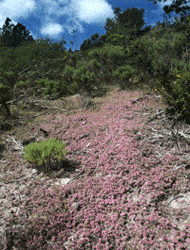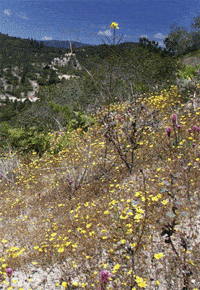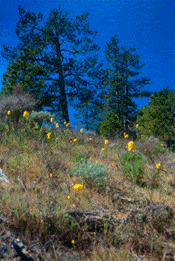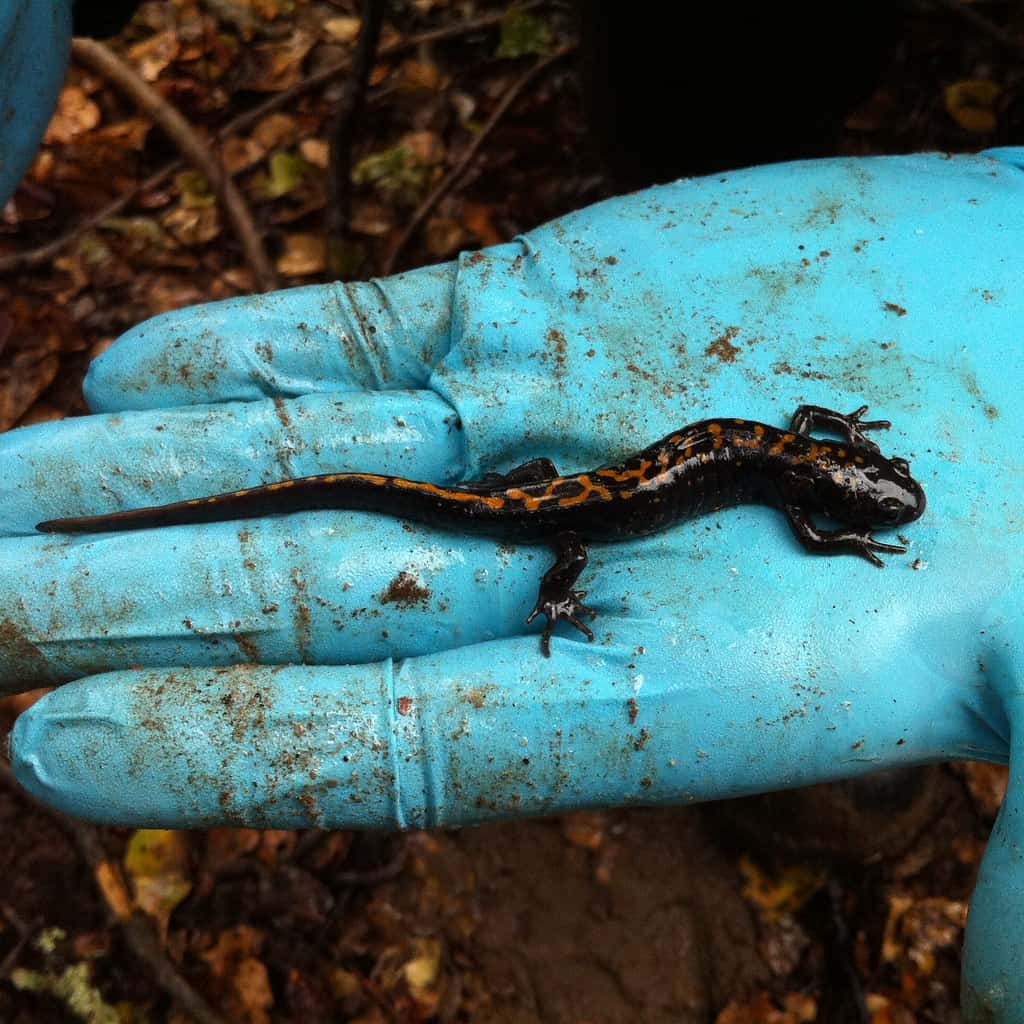Sensitive Habitat Information
Santa Cruz County
Sensitive Habitat

Sand Hill Habitat
The Sand Hills Habitat layer consists of the Zayante sands soil type in the Scotts Valley, San Lorenzo Valley, Bonny Doon and south county areas.In these locations, these soils provide habitat for State and federally listed endangered species and locally unique species, such as the Mount Hermon June beetle, the Zayante band-winged grasshopper, Scotts Valley spineflower, Ben Lomond wallflower (pictured), and silver-leaved manzanita. For more information click here and here.
Biotic Resource Area
This is defined in the Santa Cruz County General Plan as an area of special biological significance as identified by the State Water Resources Control Board, the California Department of Fish and Game Natural Diversity Database, and the County's own Biotic database. These are areas which provide habitat for locally unique biotic species/communities as well as areas adjacent to essential habitats. PLEASE NOTE: The Biotic Resource maps are very general in nature and largely not recognized by city governments. It is best to talk to the local Resource Planner for your area to see if a Biotic Review is required.
California Natural Diversity Database
The CNDD focuses on gathering information on the location of rare and endangered species (including individual plants and animals and communities) and making this information available to the public. By publishing this information, the CNDD aims to preserve biodiversity: agencies can access information regarding rare species and can make informed decisions during planning processes. The CNDD provides continuous updates, relying on the public to report sightings of rare species. The California Native Plant Society is a major contributor to the database. The CNDD also uses historical records to establish the presence of species, so the CNDD has records dating back to 1854.


Riparian Woodlands
Riparian Woodlands as defined in General Plan adopted May 24, 1994. Woodland is a plant community that includes those woody plant species that typically occur in wet areas along streams or marshes. Characteristic species are: Black Cottonwood, Red Alder, White Alder, Sycamore, Box Elder, Creek Dogwood, and Willow.
Property considerations when in Range of the Santa Cruz Long-Toed Salamander:
The Santa Cruz long-toed salamander (Ambystoma macrodactylum croceum) inhabits temporary ponds for breeding and adjacent upland scrub and woodland areas during the nonbreeding season. These ponds and adjacent scrub and woodland habitats occur in relatively few areas along the central coast of California; this subspecies is restricted to southern Santa Cruz and northern Monterey Counties. This salamandar is a fully protected species, meaning no injury or death to this animal can be authorized. If property is withing the range of the species, special action must be taken to develop property. Development contraints.

